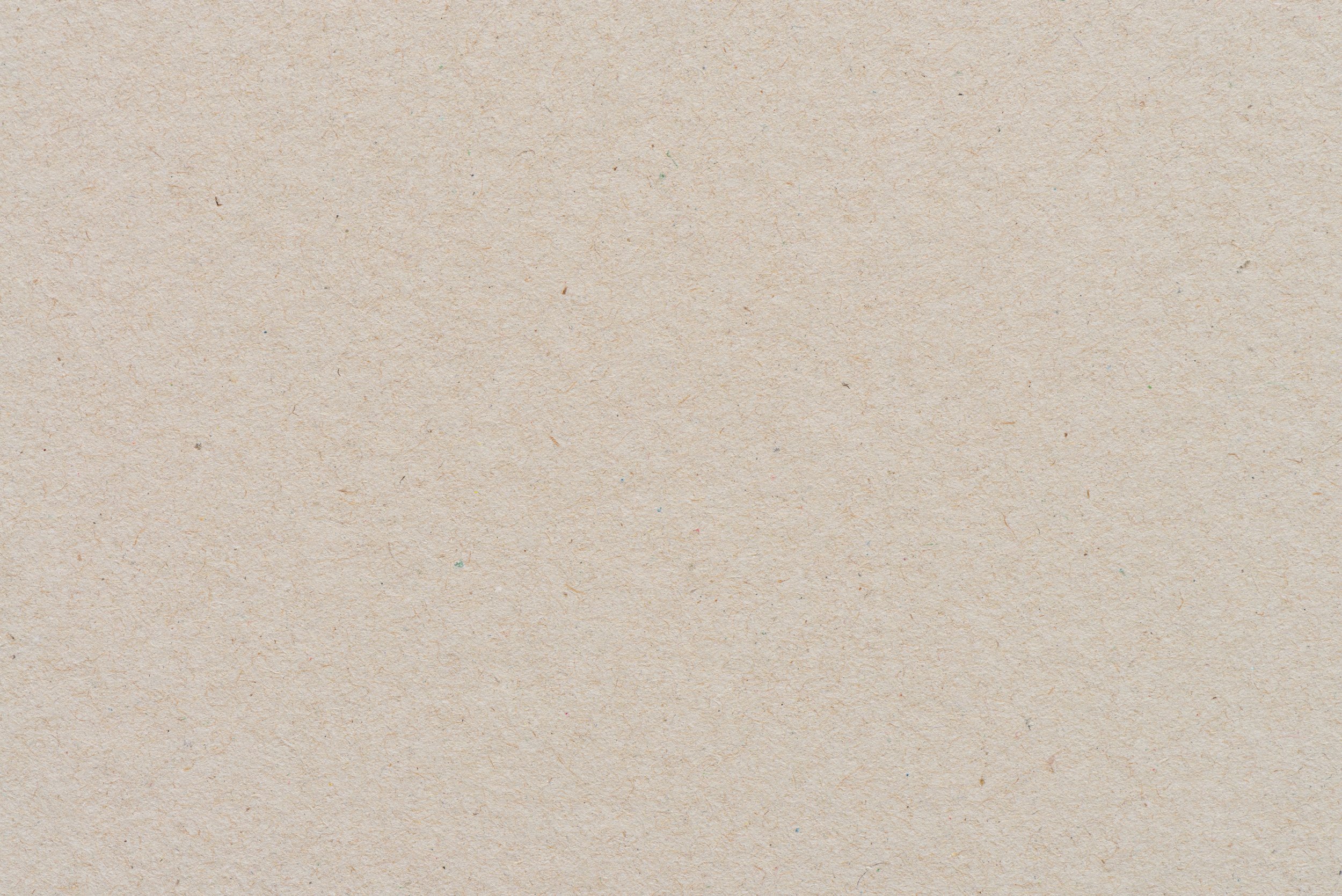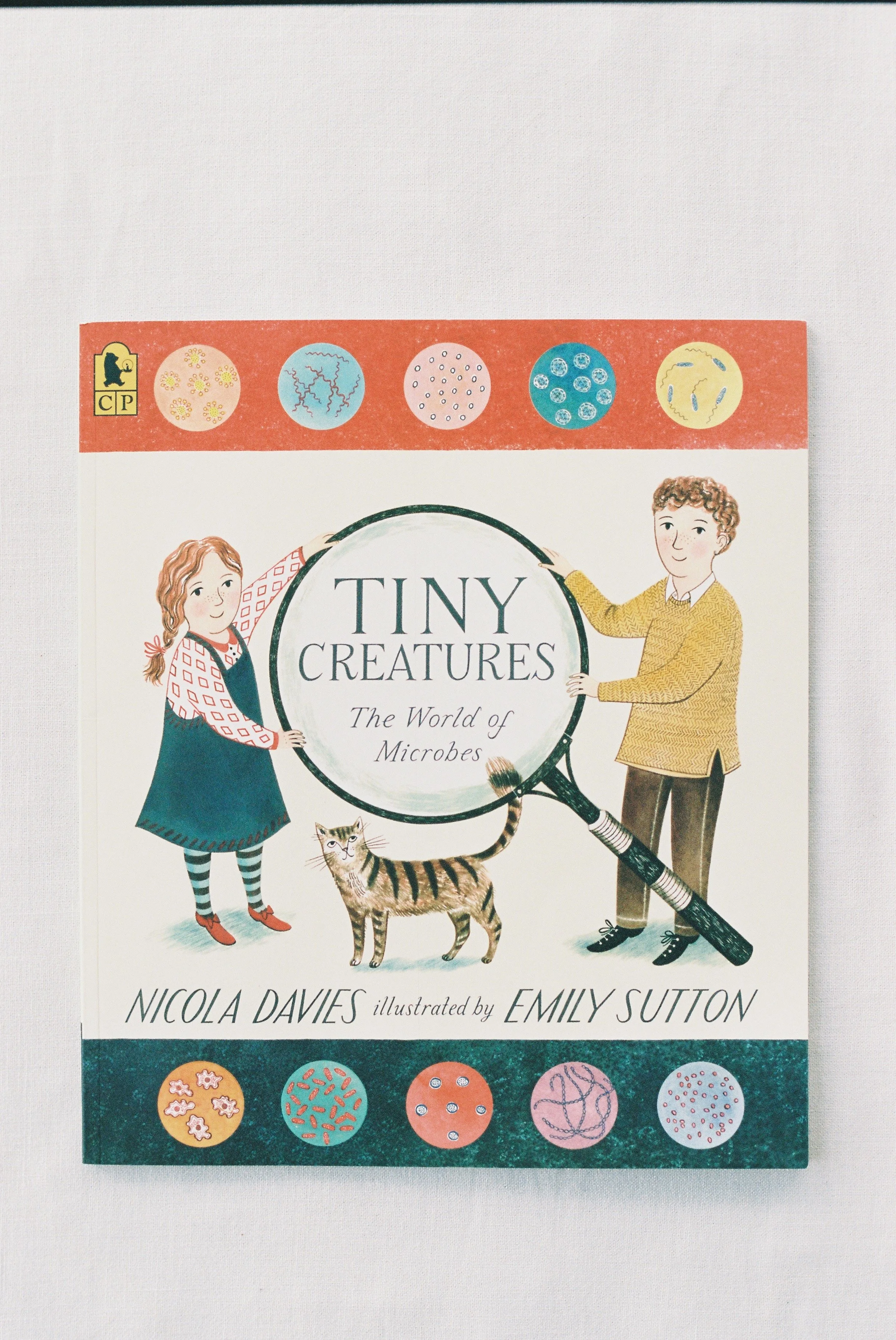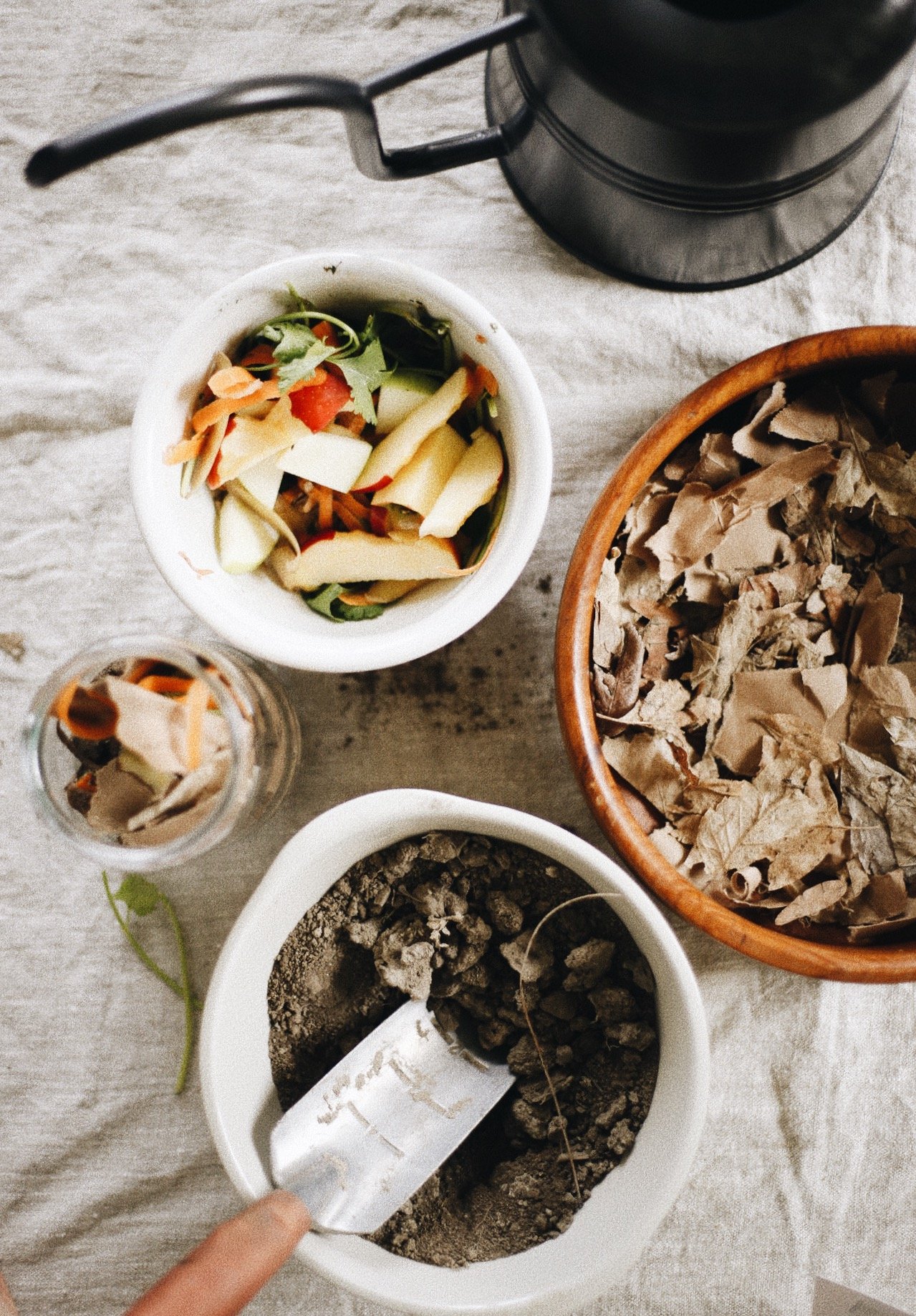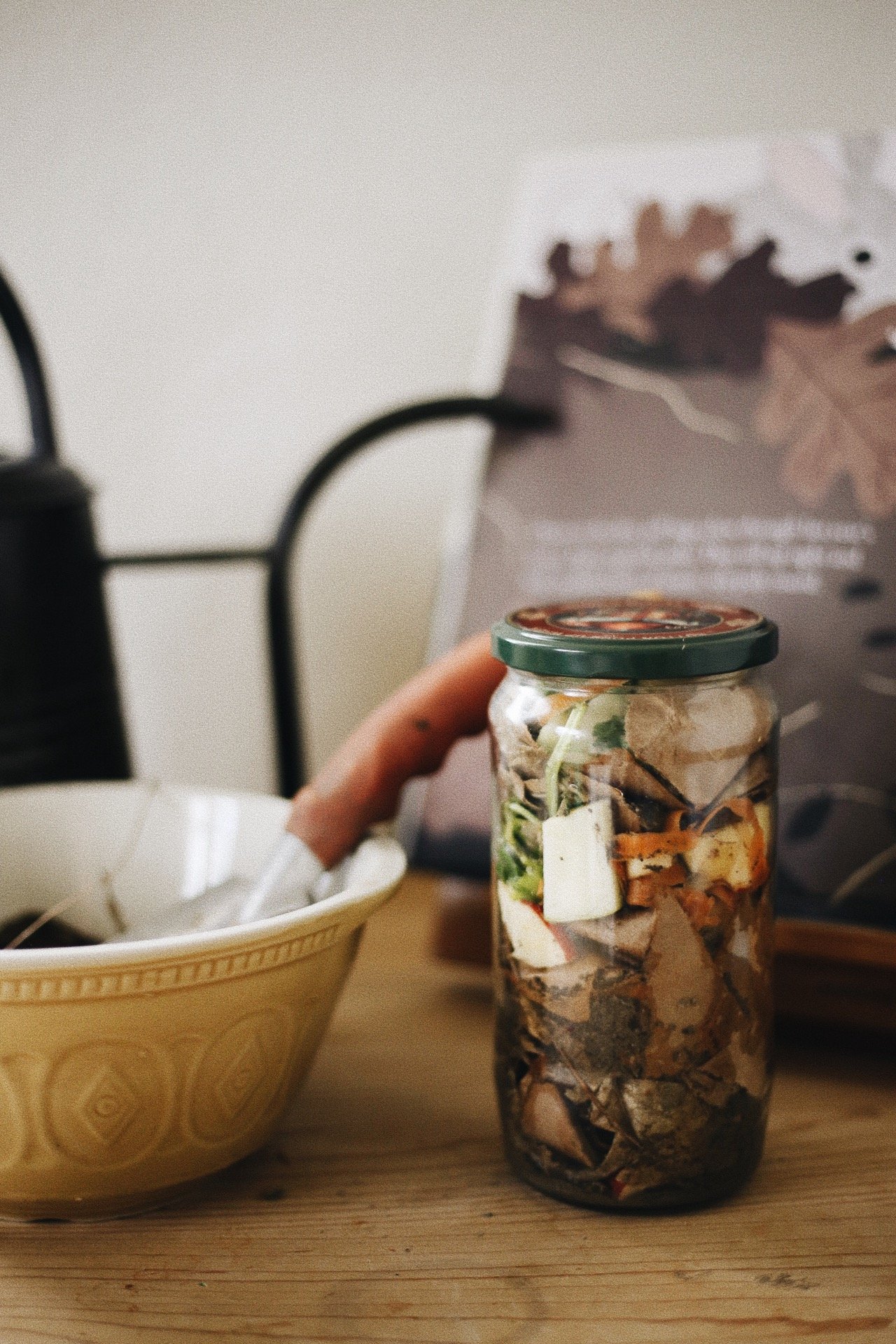
Compost and Microbes
LESSON 4
Children learn about microbes through a story, and then make their own composting jar.
The book “Tiny Creatures: The World of Microbes” by Nicola Davies.
The book “Compost Stew: An A to Z Recipe for the Earth,” by Mary Mckenna Siddals (Optional)
A mason jar
Food scraps, such as egg shells, fruit or vegetable peels
Leaves, or other organic matter
Paper, or paper towel/toilet paper tubes
Dirt
Materials
Gather materials.
Collect food scraps, organic matter, paper, and dirt.
Familiarize yourself with the story.
Preparations
Promote curiosity and interest in soil.
Foster language development by asking open-ended questions about the story and supporting new vocabulary.
Encourage children to appreciate and respect the world around them as they learn about microbes.
Support curiosity and creating of a the composting jar.
Objectives for Teachers
Children practice critical thinking skills and learn new information as they ask and answer questions about the story.
Children develop an appreciation and understanding of the importance of microbes in their environment.
Children contribute to making small changes to better the environment as they learn how to compost.
Objectives for Children

Collect and Connect
Come up with actions and practice saying the poem “Worm” together.
Worm
Worm, worm,
Slippery slide,
I smell a bird,
I better hide.
Down, down,
Under the ground,
Wormy, squirmy,
Around and around.

Activity Flow
Reflect on the previous lesson as you ask questions like:
What is organic matter?
Can you give an example of something that is organic matter?
What is something that is NOT organic matter?
What parts of the soil puzzle have we learned about so far? (Rocks, minerals, and organic matter)
2. Initiate a discussion with the question: What happens to organic matter? For example, when leaves or apples fall off the trees, what happens to them? Or if an animal dies out in nature, what happens to it? Give children time to think through their answers and allow them to answer in their own way.
3. Introduce the story “Tiny Creatures: The World of Microbes” by giving children a simple overview. This book will help us understand what happens to organic matter. We'll learn about a new word called 'microbes.' They're so tiny that we can't see them, and the book will show us just how small and important they are. As we read, let’s pay attention to what microbes do to organic matter.
4. After you read the story, follow up with a discussion about microbes. Some questions you can ask are:
5. Help children understand that soil contains tiny microbes, and they help break down and change the organic matter into compost. Compost is good for the soil because it contains a lot of nutrients, and this is what makes our plants healthy and strong.
6. Conclude this lesson by starting a fun compost experiment. If you have the book “Compost Stew,” now is the perfect time to read it or listen to a read aloud version. Tell your child that this story will give us ideas on what we can compost in our jar. After the story, begin your own mini composting experiment in a jar.
Where did the book tell us microbes are found?
Some microbes are found in soil. What do microbes do for the soil?
The book talked about something microbes help with- compost. What is compost?
Compost in a Jar Experiment
Gather your materials: a clear mason jar, food scraps (like fruit peels or vegetable scraps), organic matter (like leaves or grass clippings), paper (such as shredded newspaper), and soil.
Layer the bottom of the mason jar with organic matter, covering about one-third of the jar.
Add a layer of food scraps on top of the organic matter, filling another one-third of the jar.
Sprinkle a layer of paper shreds over the food scraps, covering about half of the remaining space in the jar.
Fill the rest of the jar with soil, leaving a little space at the top.
Add a small amount of water to moisten the layers. (We made the mistake of adding too much water last year, and it didn’t work)
Close the lid tightly on the jar.
Shake the jar gently to mix the layers.
Place the jar in a warm, sunny spot.
Shake the jar daily to aerate the contents and open the lid to let fresh air in. (It might be a little stinky, so if the weather is nice, head outside!)
Watch as the composting process begins and observe any changes over time.
A note for teachers: In order for these materials to turn into compost, you need four things: brown matter (carbon-rich materials like organic matter and paper), green matter (nitrogen-rich materials such as food scraps), water, and air. If you choose to cover your jar, make sure to poke holes in the top or allow some time for the lid to be off.





